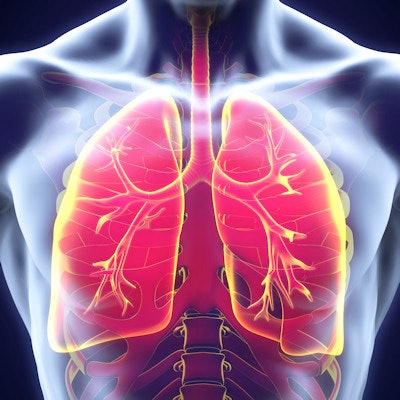
CT lung screening programs could improve early cancer detection by focusing on sexual minorities, who were twice as likely as heterosexuals to be eligible for a CT screening exam but not receive one, according to an article published online March 23 in Cancer Epidemiology.
Recent studies have reported that the odds of developing lung cancer are considerably higher among racial minorities and individuals with a mental illness, underscoring an opportunity for clinicians to boost the efficiency of screening programs by redoubling their efforts to serve these often underserved populations.
Fitting within this category, sexual minorities (those who identify as lesbian, gay, bisexual, "other," or "not sure") are at a greater risk of smoking and likely have a higher rate of eligibility for CT lung screening, compared with their heterosexual peers. However, they do not seem to receive attention accordingly, noted first author Philip Veliz, PhD, and colleagues from the University of Michigan.
"Indeed, prior research shows that healthcare interventions can exacerbate inequalities, making it critical that health policymakers be aware of the discrepancy between rates of [CT lung screening] eligibility and the use of CT scans for lung cancer to more effectively detect and manage lung cancer among sexual minorities," they wrote.
To facilitate that aim, the researchers obtained information from participants in the 2017 Behavioral Risk Factor Surveillance System (BRFSS) survey who were deemed eligible for CT lung screening based on the U.S. Centers for Medicare and Medicaid Services (CMS) guidelines. The survey included data on the health-related risk behaviors and conditions of more than 20,000 individuals from Florida, Georgia, Nevada, Oklahoma, and Vermont (Cancer Epidemiol, June 2019, Vol.60, pp. 51-54).
Collectively, the data revealed that sexual minorities had roughly two times the likelihood of eligibility for CT lung cancer screening than heterosexuals. Members of a sexual minority were also twice as likely to be eligible for an exam but not receive one.
| CT lung screening trends for heterosexuals vs. sexual minorities (adjusted odds ratios) | ||
| Heterosexual | Sexual minority | |
| Eligible for CT lung screening | 1 | 2.18 |
| Eligible for CT lung screening but did not receive an exam | 1 | 2.01 |
The differences in screening eligibility rates were greatest between heterosexuals and those who identified as gay or lesbian (adjusted odds ratio of 4.31, p < 0.001), followed by bisexuals (1.72) and those who listed their sexuality as "other" or "not sure" (0.652).
Upon further stratification of the data, Veliz and colleagues found that the likelihood that an individual who was eligible for CT lung screening would not receive an exam was more than three times higher for gays and lesbians (adjusted odds ratio of 3.31, p < 0.01) and exactly two times higher for bisexuals, compared with heterosexuals.
In addition, the group with the single largest likelihood of not undergoing a screening exam despite eligibility was the lesbian cohort, with a statistically significant adjusted odds ratio of 4.91 (p < 0.01).
"This low level of utilization of CT scans to screen for lung cancer is particularly troubling in the context of a substantial sexual orientation-related disparity. ... Greater efforts are needed to increase access to healthcare services that promote early detection and treatment of lung cancer in this vulnerable population," the authors concluded.



















